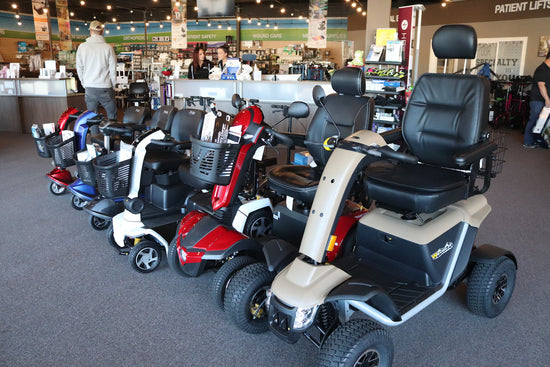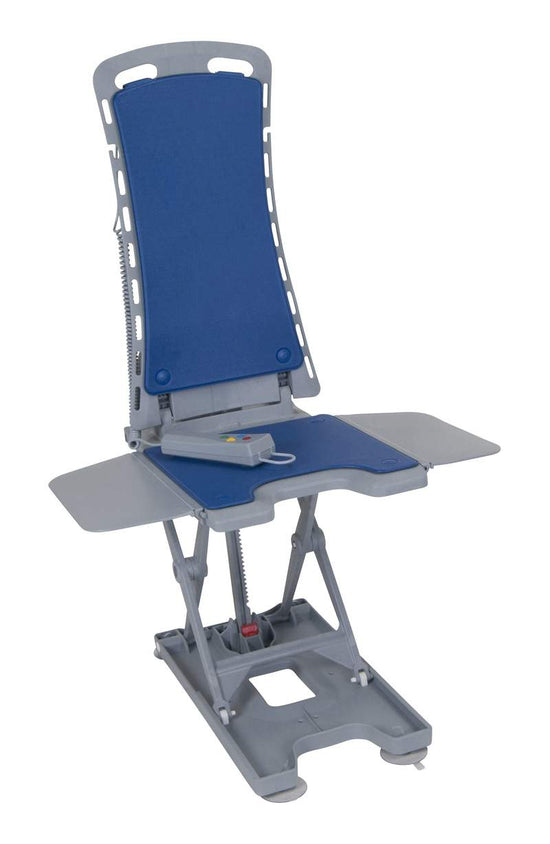The bathroom is often considered one of the most dangerous rooms in the home, especially for seniors. Slippery surfaces, high thresholds, and limited mobility can turn routine activities into potential hazards.
For those wishing to age in place, creating a bathroom that prioritizes safety and accessibility is essential. By addressing common challenges like fall risks and physical strain, you can maintain independence and enjoy greater peace of mind. Simple adjustments, combined with thoughtful planning, can make this vital space both functional and secure as your needs evolve.
Identifying Common Bathroom Hazards for Seniors
Identifying common bathroom hazards is the first step towards creating a safer space for seniors. The bathroom, with its slippery surfaces and confined layout, presents unique risks, but understanding these can help mitigate accidents. For seniors aging in place, awareness of these hazards is critical.
Key bathroom hazards include:
-
Slippery Surfaces
Water accumulation on floors, bathtubs, and showers can increase the likelihood of falls. Soap and shampoo residue can make these areas even more hazardous. Adding non-slip mats or strips can significantly reduce these risks. -
Insufficient Lighting
Poor lighting can make it difficult for seniors to see obstacles or wet areas, increasing the risk of accidents. Bright, motion-activated lights can improve visibility and make navigation safer. -
Hard-to-Reach Fixtures and Storage
Reaching for items in high or low cabinets can lead to strain or loss of balance. Rearranging storage to accessible heights or introducing grab bars near frequently used areas can help. -
High Thresholds at Bathing Areas
Stepping over a high bathtub edge can be challenging for seniors. Alternatives like walk-in tubs or curbless showers can enhance accessibility.
By addressing these common hazards, seniors can reduce fall risks and maintain independence and confidence in their homes.
The Role of Non-Slip Flooring in Preventing Accidents
Slips and falls are a serious concern for seniors, especially in the bathroom where wet surfaces can create hazardous conditions. Non-slip flooring is a critical component in preventing accidents and ensuring a safer environment for older adults. Choosing the right flooring can significantly reduce the risk of slips while maintaining comfort and functionality.
Rubber flooring is considered one of the safest options for seniors. It offers exceptional slip resistance, even when wet, and its cushioning properties can minimize injuries in the event of a fall. Rubber is also durable, easy to maintain, and comes in a variety of colors to suit any bathroom design.
Vinyl is another excellent choice, particularly luxury vinyl flooring (LVF). This material combines water resistance with a textured surface that enhances traction, making it both practical and aesthetically pleasing. Vinyl is easy to clean, durable, and ideal for seniors looking for a low-maintenance option.
Textured tiles, such as porcelain or ceramic with matte finishes, provide excellent slip resistance while adding a touch of elegance to the space. These tiles are designed to improve grip underfoot, making them ideal for wet environments like bathrooms.
Investing in non-slip flooring is a practical, cost-effective way to enhance safety and support independence for seniors aging in place.
Installing Grab Bars and Handrails for Added Support
Grab bars and handrails are essential safety features in a senior-friendly bathroom, significantly reducing the risk of falls and enhancing confidence. These sturdy supports provide stability during activities such as stepping into the shower, lowering to a toilet seat, or standing up from a seated position. For seniors aging in place, grab bars and handrails add a layer of reassurance, promoting greater independence in daily routines.
Proper installation and thoughtful placement are key to maximizing their benefits. Grab bars should be securely mounted into wall studs or with heavy-duty anchors to ensure they can bear weight. Common placement areas include beside toilets, inside and outside showers, and near bathtubs. For optimal functionality, horizontal grab bars at a height of 33 to 36 inches are often recommended, while vertical bars can be installed near entrances to showers or tubs for added grip during entry and exit.
There are various designs to suit different needs, from fold-down bars for tight spaces to textured models for enhanced grip. Seniors living with limited mobility may also benefit from grab bars featuring integrated lighting. By installing these handrails strategically, you can create a safer bathroom environment that supports aging in place, offering both practicality and peace of mind.
Accessible Bathtub and Shower Solutions
Accessible bathtub and shower solutions are essential for creating a safe and functional bathroom for seniors. Two popular options, walk-in tubs and curbless showers, significantly enhance accessibility while minimizing risks associated with traditional bath setups.
Walk-in tubs are designed to make bathing safer and more comfortable. They feature a low-threshold door, allowing seniors to step in without climbing over high tub edges. With built-in seats, grab bars, and hand-held showerheads, these tubs cater to reduced mobility and balance challenges. Many models even offer spa-like features such as jets, providing relaxation and therapeutic benefits. By containing water effectively, walk-in tubs also help keep bathroom floors dry, further reducing slip hazards.
Curbless showers, also known as zero-threshold showers, eliminate barriers entirely, enabling seamless entry. This design is particularly beneficial for seniors with walkers or wheelchairs, as well as those who find it difficult to step over a shower curb. Equipped with slip-resistant flooring and optional built-in seating, curbless showers prioritize safety and convenience. Adding grab bars and adjustable-height showerheads can further enhance their functionality.
Implementing these solutions not only increases safety but also supports independence, allowing seniors to maintain their routines comfortably while aging in place.
Upgrading Toilets for Better Comfort and Accessibility
Upgrading toilets is a crucial step in making bathrooms safer and more accessible for seniors. Traditional standard-height toilets, typically around 15 inches tall, can be challenging for individuals with mobility issues or joint pain. Comfort height toilets, designed to be 17 to 19 inches from floor to seat, offer a practical solution by facilitating easier transitions between sitting and standing.
These taller toilets reduce strain on the knees and back, making them particularly beneficial for seniors experiencing arthritis or other physical limitations. Additionally, the added height provides better balance and stability, lowering the risk of falls. Installing comfort height toilets is also relatively straightforward and doesn’t require extensive renovations, making it an affordable improvement for aging in place.
For those exploring further accessibility options, raised toilet seats can be an alternative. They attach to existing fixtures, increasing the overall seat height without the need for a full replacement. Some models include handles or armrests, providing additional support during use.
When upgrading, it’s also worth considering add-ons such as bidet attachments for improved hygiene and soft-closing lids for convenience. By addressing these everyday challenges, a modern, accessible toilet setup can significantly enhance comfort, safety, and independence for seniors aging gracefully in their own homes.
Improving Bathroom Lighting for Safety and Visibility
Proper bathroom lighting is critical for ensuring safety and visibility, especially for seniors. With age, vision changes can make navigating poorly lit spaces more challenging, increasing the risk of accidents. A well-lit bathroom can significantly reduce falls and provide much-needed peace of mind for both seniors and their loved ones.
Strategically implemented lighting solutions can make a world of difference. Motion-sensor lights are an excellent choice, turning on automatically when movement is detected. This eliminates the need to search for switches in the dark, particularly useful during nighttime trips to the bathroom. Anti-glare fixtures are another effective option, reducing harsh reflections that can disorient individuals with visual impairments. Additionally, placing soft, warm lighting around mirrors and installing LED strips near grab bars or steps can further enhance visibility and comfort.
Proper lighting placement is also crucial. Overhead ambient lights combined with focused task lighting near the vanity, shower, and toilet ensure consistent illumination throughout. Dimmable lighting offers additional flexibility, letting seniors adjust brightness for optimal comfort and safety.
To enhance your home with thoughtful safety solutions, visit Everything Medical. They offer a wide range of affordable home care products tailored to your needs, ensuring seniors can age in place safely and comfortably. Explore their options at everythingmedicalonline.com.




